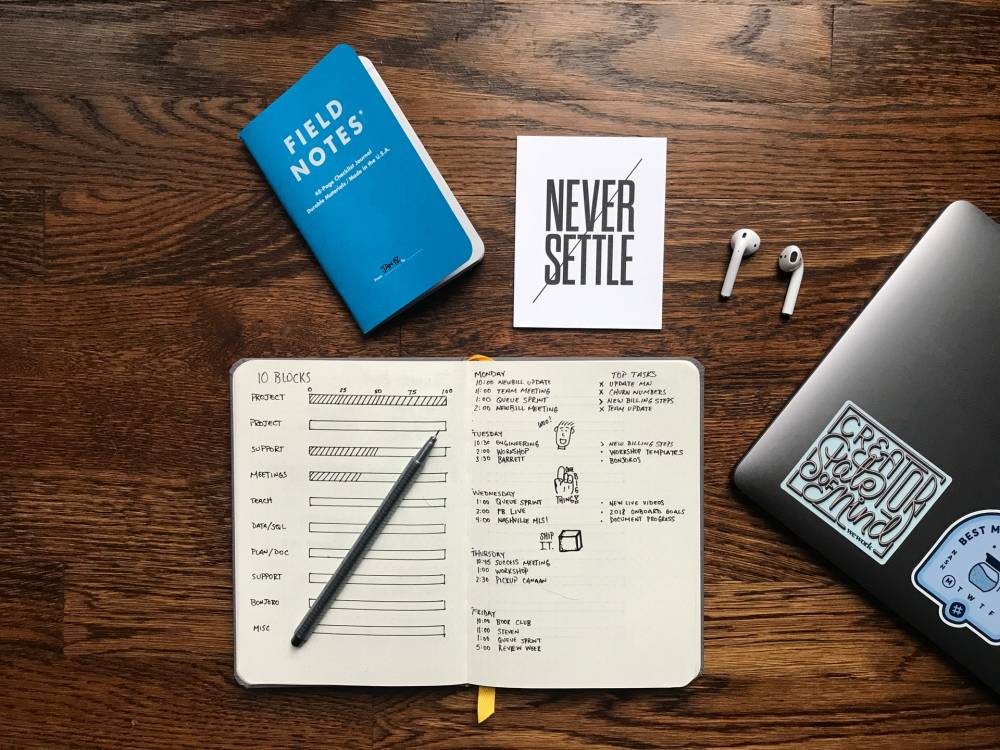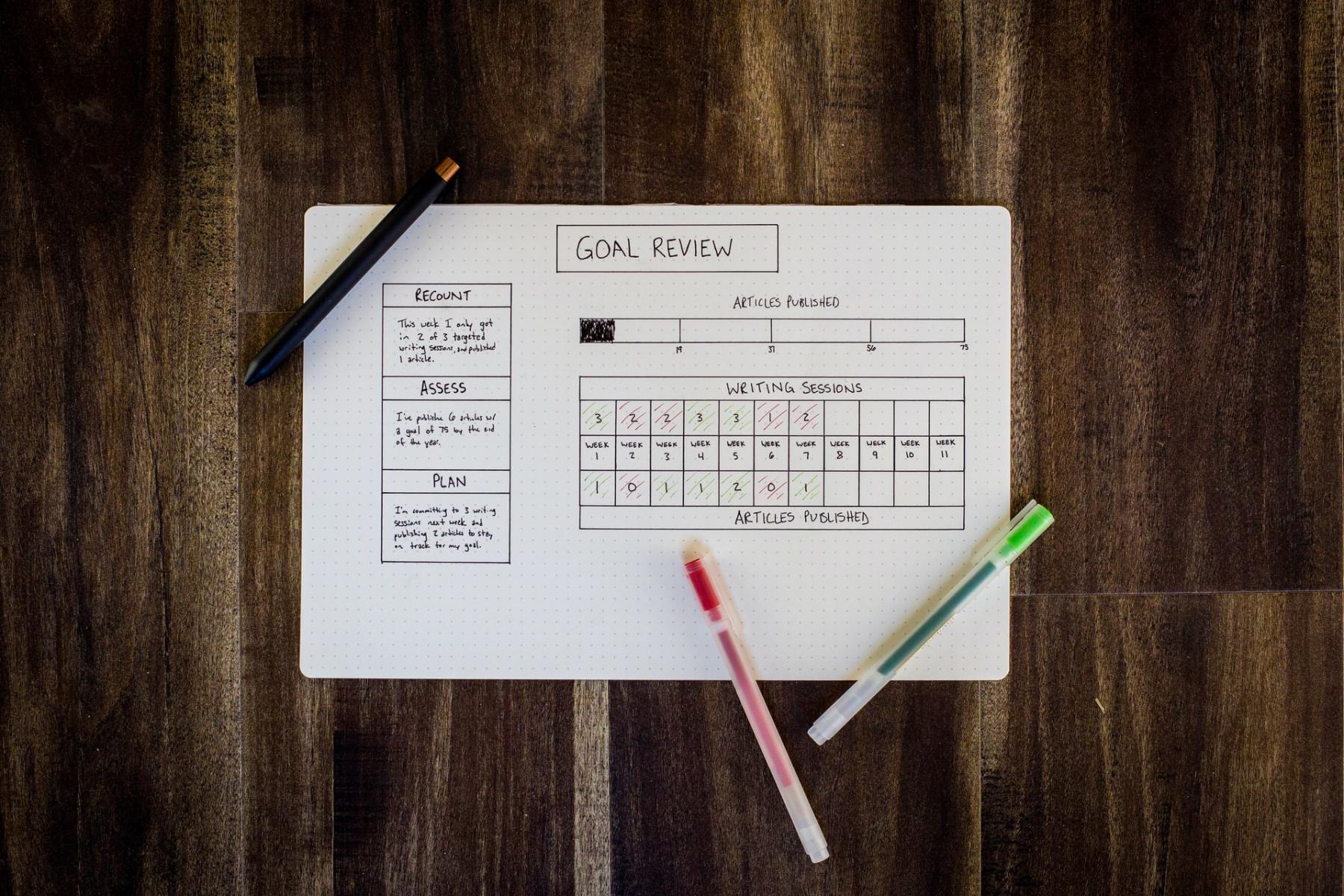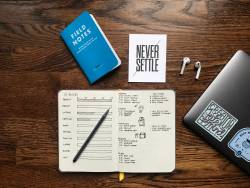
Why You Need a Bullet Journal in Your Life and How to Use It

Bullet Journal—what is it and how do I make one for myself?
In an increasingly digital world, the trend of analog bullet journaling is a breath of fresh air. Here is a brief introduction to what exactly a bullet journal is and how to incorporate it into your busy life.
What is a bullet journal?
According to the official Bullet Journal website, the bullet journal is a “Mindfulness practice disguised as a productivity system”.
Many people confuse busyness with productivity. We get overwhelmed with a mountain of tasks and to-dos that never seem to get done.
We get lost in the noise of a distracting world. We lose track of things that are most important. We become paralyzed by the list of things we think we need to focus on.
The bullet journal brings a calm to the chaos, a sense of order to things. It can help you focus your energy so that you achieve your goals.
You can use a bullet journal to track habits, centralize your schedule and daily tasks, and increase your mindfulness. And some studies show that the simple act of writing by hand can improve learning, focus and memory retention.

How do I use a bullet journal?
There is a language surrounding the system of bullet journaling that it is helpful to know before getting started.
Here is a quick rundown of some of the terms and their meanings:
- Indexing: Indexing keeps everything organized, like a table of contents. Number every page in your bullet journal so that you can note the location of items in the index.
- Collections: Every page in your bullet journal has a topic. These topics are called collections. You track collections by indexing. Once you create a collection, add it to the index. Here are three main types of collections:
- Future log: This is where you keep track of events, goals, and tasks occurring in future months.
- Monthly log: This consists of a two-page spread, a calendar page and a task page. Here you can view your entire month at-a-glance.
- Daily log: The daily log is where the bullet journal really shines. It keeps track of your tasks, events and notes using a system called rapid logging.
- Rapid logging: Think of this as the language of the bullet journal. It is a style of short-form notation with bullet points and other signifiers. There are three different categories for bullet points:
- Tasks: Tasks are indicated by a dot and get completed, migrated, scheduled, or cancelled as needed. Here are the symbols:
- “•” precedes any task you write down
- “X” for tasks that you’ve marked off your list
- “>” if you don’t complete a task, use this symbol to migrate it to another collection (like the following day/week/month)
- “<” designates tasks with dates scheduled in the future
- Events: Events are indicated by an open circle “o” and are date and/or time specific.
- Notes: Notes are indicated by a dash, “-”. It can mark anything noteworthy that you want to remember: observations, ideas, or facts.
- You may want to develop some signifiers of your own for your bullet journal--symbols you use to know meaning at a glance.
- For example: ?= investigate , $= purchase, != urgent
- It is helpful to use bullets and signifiers in the left margin so that you can quickly scan the page to determine meaning.
- Tasks: Tasks are indicated by a dot and get completed, migrated, scheduled, or cancelled as needed. Here are the symbols:
- Migration: The term “migration” refers to moving items to a new collection. It is one of the most important concepts of the bullet journal. It is a daily and monthly review of your progress, what you are spending time on, and what is important to you. It can serve as a powerful visual cue as you decide what gets migrated and what gets canceled.

Do I have to be artistic to use a bullet journal?
It can be intimidating to scroll through #bujo images on Instagram. People fill their pages with beautiful designs, watercolors, and calligraphy.
But here’s the thing: you do not have to be artistic to use a bullet journal.
Your bullet journal is just that. It’s yours. You can make it be exactly what you need, nothing more, nothing less.
If your aesthetics are perfectly ordered, color-coded lists, do that.
If you prefer doodling to gather your thoughts and bring order to your mind, do that.
Don’t let the pressure of social media keep you from starting your own bullet journal. Anyone can reap the mind-clearing, mindfulness-inducing productivity benefits that it has to offer.

Get started on your own bullet journal!
If you’re convinced that the bullet journal is the solution to your problems, here are some ideas for bullet journal inspiration:
- Mission statement: Come up with your own mission statement and write it down. Refer to it whenever you need a boost of focus or encouragement.
- Goals: Goals that are not written down almost never get accomplished. Whether you have personal goals (lose 10 pounds by the end of the year) or professional goals (negotiate a raise at my next performance review), a bullet journal is a great place to keep track of them.
- Mind map: A mind map can serve as a great tool for linking ideas and key concepts. Adding a mind map to your bullet journal can help you take notes on a meeting or get inspired for a new project.
- Gratitude: When we take note of the things we are grateful for, we become grateful for more of the things in our lives. Make a habit to write down three things you are grateful for everyday.
- Budget: If you want to track your money habits, your bullet journal can help keep you focused. Saving for a big purchase or a vacation? Track your progress in your bullet journal.
- Habit tracker: If there are several habits that you want to build and track, keep them in your bullet journal. This can serve as a quick visual check to see if you are on track to meet your daily habit goals.
- Books to read: Do you find yourself getting (and then forgetting) book recommendations? Write them in your bullet journal. You can dedicate a whole page to books you want to read, marking them off as you go.
- Quotes: A good quote can have the power to motivate, uplift and inspire. Keep track of your favorite quotes in your bullet journal.
- One sentence a day: Do you cringe at the thought of writing in a daily journal? Commit to writing only one sentence per day. It's a daily writing habit that anyone can commit to.
If you're more artistic, here are some ideas to help you fill pages:
- Phases of the moon: Every month, you can add the moon phases to the calendar. Taking time to notice and appreciate this can improve your mindfulness.
- Seasonal flowers or vegetation: Draw your favorite seasonal flower, fruit or vegetable. This can help you grow in your appreciation for nature and the changing of the seasons.
- Turn a “mistake” into a masterpiece: Did you drip some coffee on a page? Let your imagination run wild and turn it into a picture.
The key is to keep it simple. Remember, you can always add more flair or more complex systems as you go. But if you start out complicated, you may get overwhelmed and not even end up using the system at all.













